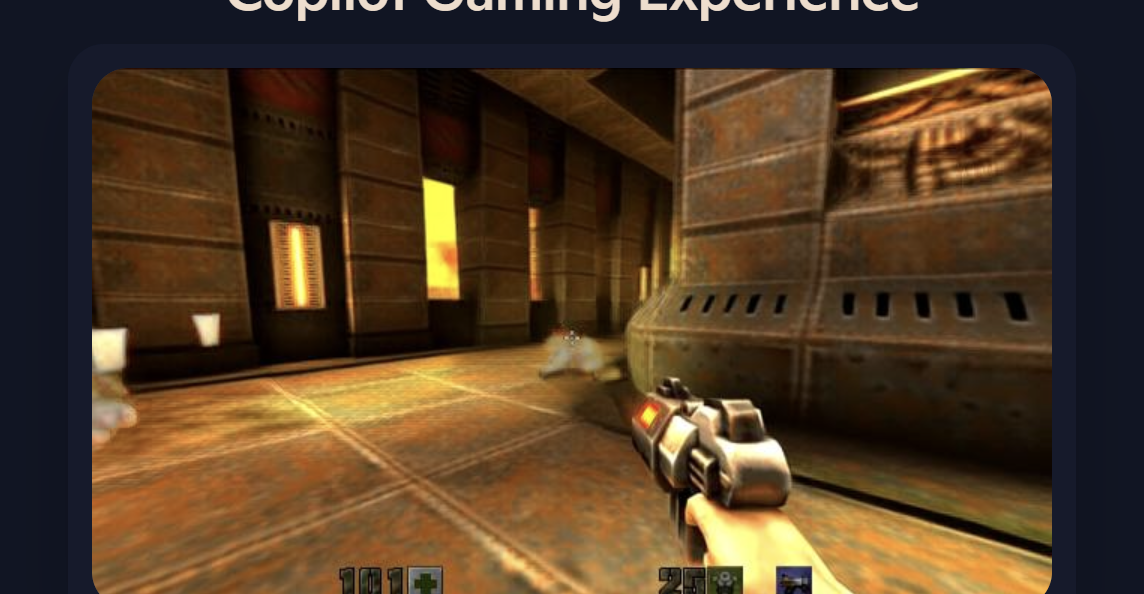Microsoft Develops an AI-Generated Version of Quake

Microsoft Launches AI-Driven Gaming Innovations
Microsoft has stepped into the exciting realm of artificial intelligence in gaming with the introduction of its Muse AI model. This initiative aims to create gameplay experiences that are generated by AI, marking a significant step forward for the company in the gaming sector. Earlier this year, Microsoft showcased its Muse technology, which has now led to a unique playable version of the classic game Quake II through its Copilot feature.
What is Muse AI?
Muse is an advanced AI model developed by Microsoft that focuses on generating gaming experiences. Initially presented as a research project, Muse has been evolved to offer practical demonstrations. The latest tech demo allows users to experience Quake II, a beloved classic, in a browser environment. This offering is part of Microsoft’s broader Copilot for Gaming initiative, which seeks to enhance user engagement and game development through AI.
Features of the Quake II Demo
- Browser Playability: Users can access the AI-generated version of Quake II directly from their browsers without requiring downloads.
- Basic Gameplay: The demo features a rudimentary level with blurry graphics and basic enemy interactions.
- Limited Access: Microsoft has restricted the playtime for this tech demo, providing users with only a short glimpse of what AI-generated gameplay can look like.
- Improved Performance: Initially demonstrated at a low frame rate of 10fps and a resolution of 300 x 180, the latest version of the demo runs at a more playable frame rate with a resolution of 640 x 360, although it still remains limited in scope.
Future Prospects with Muse AI
The vision for Muse extends beyond just creating playable demos. Microsoft sees potential in using this technology to assist game developers in prototyping new games. During the unveiling of Muse, company representatives expressed hopes that such AI could also breathe new life into classic games, making them compatible with modern hardware.
Phil Spencer’s Vision for Game Preservation
Phil Spencer, the CEO of Microsoft Gaming, articulated his thoughts on the future of gaming preservation. He suggested that AI could be instrumental in learning from gameplay data, allowing for older games to be ported to various platforms without relying on original hardware. This innovative concept could vastly expand the ways these classic games can be experienced by new audiences.
Expanding AI Capabilities in Gaming
It’s evident that Microsoft is not limiting Muse to just Quake II. The development of this AI model is expected to extend to more titles, allowing for the creation of additional short interactive gaming experiences. Moreover, Microsoft is also focusing on enhancing the AI’s functionality by planning to use it as a gaming coach.
How AI Can Enhance Gaming
- Real-time Assistance: Future iterations of Copilot will allow the AI assistant to observe players and offer tailored tips during gameplay.
- Guides and Tutorials: Players will receive guidance on improving their skills, helping them navigate challenges more effectively.
- Integration with Copilot Vision: Selected features will soon be available to Windows Insiders, allowing users to experience these advancements firsthand.
Conclusion
With the unveiling of Muse and its applications in gaming, Microsoft is making bold strides in both gameplay generation and game preservation. As technology continues to evolve, the potential for AI to transform how games are developed and experienced appears limitless. As players and developers alike await further innovations, the future of technology in gaming looks bright.






